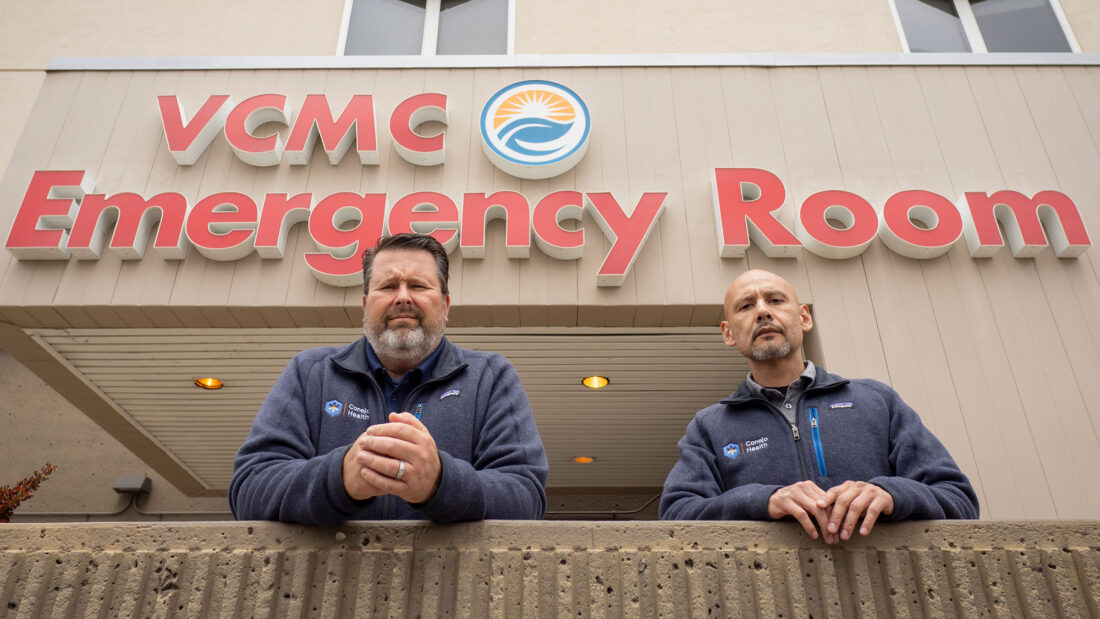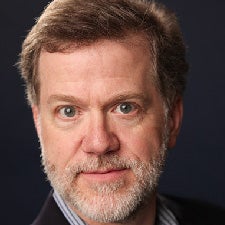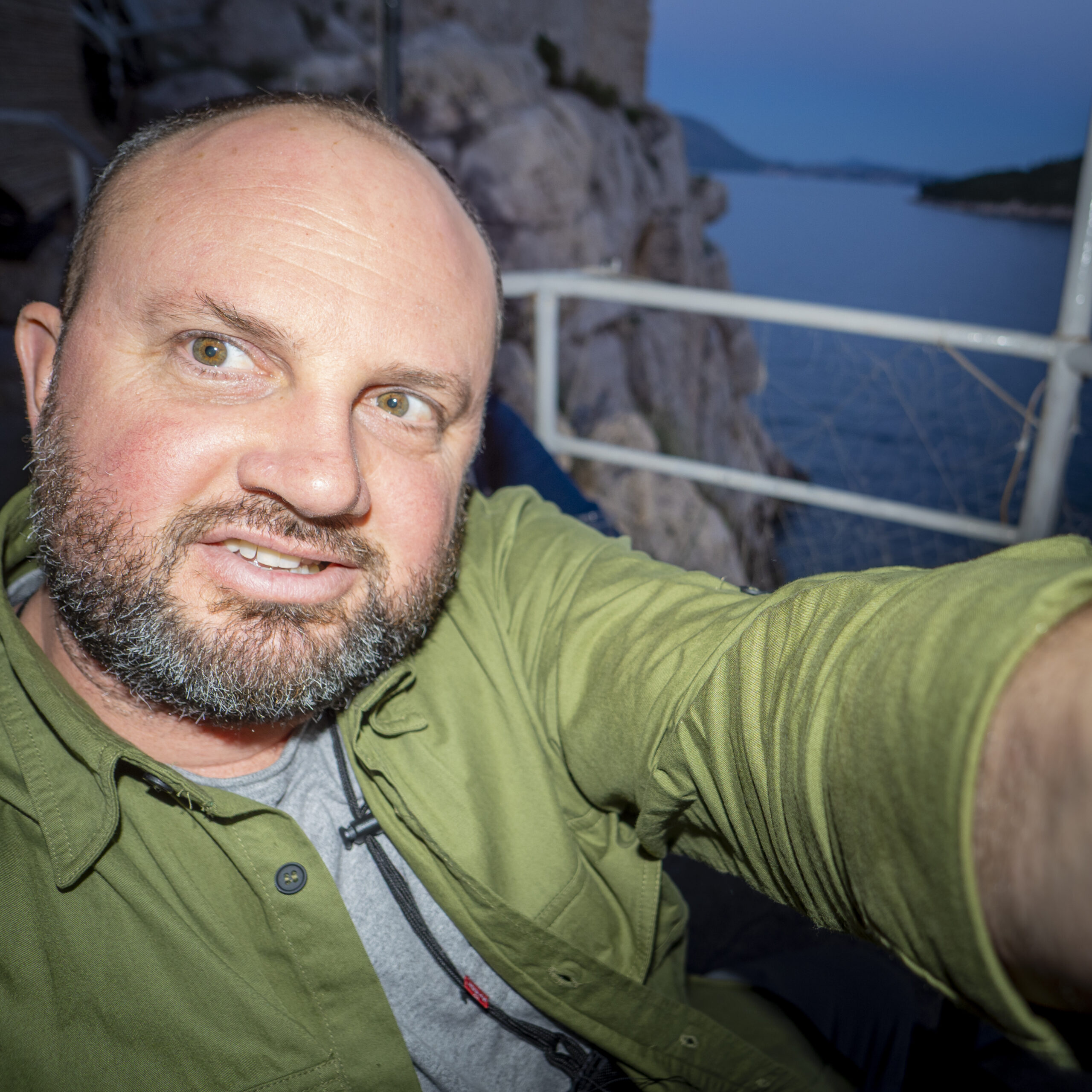
▼ A community health worker describes how he recovered from lifelong addictions to become a certified alcohol and drug counselor. Read about his personal journey in the sidebar below.
It all starts in the emergency department.
Community health workers Frank Conaway and Hector Mariscal function as a tag team at Ventura County Medical Center, the county-owned and operated hospital in the city of Ventura. They have an office right outside the ED, where they are on call Monday through Friday, 7:30 a.m. to 5 p.m.
If you come to the ED because of a drug overdose or a mental health crisis, once you have been treated by a provider, Conway or Mariscal can meet with you on the spot. They’ll talk to you face to face to see if they can get you into addiction treatment. They might help you get admitted to the detox unit upstairs in the hospital.
Once you’re stabilized and discharged, they’ll follow up with a phone call. Or two. Or three. Or however many you need to keep you safe and — crucially — help you find the programs or services that are right for you. “Between us both, we average six to eight live interactions in the ED any day,” said Conaway. “We make anywhere from 30 to 40 phone calls daily.”
Conaway and Mariscal are community health workers (CHWs) who are certified alcohol and drug counselors. They are pioneering a new way to help people with drug and alcohol problems — a way that holds the promise of reducing the overload on hospital emergency departments while steering patients toward lifesaving therapies.
This innovative protocol, sometimes called “bridge navigation,” is paid for by Ventura County’s Medi-Cal managed care plan, Gold Coast Health Plan, through the Medi-Cal Community Health Worker benefit. The health plan contracts with Conejo Health, a nonprofit community organization dedicated to turning evidence-based harm reduction strategies into “the new normal.” Conaway and Mariscal are employed by Conejo Health.
This three-way collaboration involving Gold Coast, Conejo Health, and Ventura County Medical Center shows what managed care plans can achieve by creatively applying existing funding streams to challenging public health problems that provider organizations may not be able to address independently.
CHW Program’s Coverage Umbrella
The community health worker benefit was adopted by California’s Department of Health Care Services (DHCS) in 2022 as part of a comprehensive effort to address the root causes of poor health among some segments of the Medi-Cal population. Reimbursable CHW services include addressing or preventing chronic conditions, infectious diseases, and behavioral health conditions. The idea is to close the gaps that conventional medical and acute-care providers aren’t equipped or don’t have time to handle; and to create connections between the patient, who may be flummoxed trying to navigate the care delivery system, and the services they need to get healthy.
DHCS lists mental health and substance use disorders (PDF) under the CHW program’s coverage umbrella. Until a few years ago, these mental and substance use disorder (SUD) services at hospitals were funded through grants from the state’s CalBridge Behavioral Health Navigator Program. When the grant program was terminated, services in many places dried up.
In the meantime, Ventura hospital managers and quality indicators tracked by the county health plan were indicating that the system needed to do a better job connecting patients to follow-up care. Health plan and hospital managers went looking for a solution that would reduce the toll of these addictions on the community.
Conejo Health developed its Bridge Navigator program for 11 hospitals in Southern California in 2022, said Ian Anderson, Conejo’s chief operating officer. “Conejo’s strengths have always been community-oriented work performed by folks with lived experience in recovery from substance use disorders and homelessness or mental illness,” he said.
The CHW benefit provided Conejo a new opportunity to leverage Medi-Cal coverage to pay for these valuable services. Gold Coast Health Plan had a longstanding trusted partner in Conejo, which has been reliable in delivering on their contractual obligations and providing them with the information Gold Coast needed to understand the impact of the services on quality.
The new CHW emergency room protocol seems to be working.
Data released by the Ventura County Medical Examiner’s Office shows a meaningful decrease in deaths from substance use, from 265 in 2023 to 200 in 2024. The decline is due “not exclusively to Conejo, but we feel the work we are doing in our ED is making a big difference overall,” said Danielle Gabele, the hospital’s chief nursing officer. “Part of it is attributable to Conejo Health, and part of it is due to the detox unit we opened in the hospital.”
Buprenorphine, Naltrexone, and Methadone
An important aspect of the county’s harm reduction strategy is medication-assisted treatment, or MAT. For opioid addictions, the three approved medications are buprenorphine, naltrexone, and methadone. Gold Coast covers these therapies, which can relieve drug cravings, manage withdrawal symptoms, and help prevent relapses.
While community health workers cannot prescribe these medications, they can administer drugs such as buprenorphine in the field. “When they get a call for someone who is intoxicated, they can give them an initial dose and then link them up with treatment,” said Lucy Marrero, director of Gold Coast’s behavioral health and social programs.
Last year, Conejo Health distributed over 10,000 units of the anti-opioid overdose agent naloxone and 10,000 fentanyl test strips, Anderson said. “If we don’t give people a chance to get on MAT in their most vulnerable state, they may never get another one. We meet patients where they are at, whether or not they want to quit using, because every person struggling with SUD deserves dignity in recovery and in active addiction.”
A Channel to Recovery
Typical hospital EDs are not organized to help patients stuck in a crisis loop by redirecting them into treatment programs. Some patients in the throes of addiction are picked up on the street or come back to the hospital time and again without finding a channel to recovery. Those are the people Conejo navigators try to engage and persuade them to get into treatment. “A guy I called on the phone three days ago, he’s in the ER today. He remembered me when I talked to him,” Mariscal said.
Relieving pressure on hospital emergency departments is another goal of the program. For people who appear in the ED multiple times a year, CHW navigators like Mariscal and Conaway can serve as a consistent, reliable presence. Repeated interactions with the navigators help these patients build the trust necessary to alter their behaviors and think about giving up their addictions. If navigators can help people avoid returning to the ED with mental health and substance use issues, doctors and hospital staff will benefit too. They can be freed up to provide care to other patients coming into the hospital.
The Conejo guys “stay persistent,” said Gabele. “Even if the patient comes into the emergency room four times, Conejo will meet with them every time and give them support.” She attributes the “huge improvement” in patient care results to the Conejo protocol.
“You cannot underscore enough that the success of this program is highly dependent on all the different agencies involved,” Gabele said. “It’s a wonderful example of what happens when people work together to solve problems.”
‘I Was on Drugs and Alcohol Until I Was 45 Years Old’
Frank Conaway, 53, fell into his calling as a certified alcohol and drug counselor. Like many who work in this field, he lived a life filled with substance use disorders and paid the price for it until he successfully entered recovery eight years ago. Both he and Hector Mariscal, who help people wrestling with substance use crises in Ventura County, have personal experience with addiction and recovery. Here is Conaway’s story in his own words:
My drugs of choice were anything and everything. I felt like I always wanted to control something, then I found out I couldn’t control anything. I went from heroin to cocaine.
Now I don’t use anything. No cigarettes, no nicotine, no substances at all. This August, it’ll be eight years.
I have had some trauma in my life. I was hit by a drunk driver when I was six years old. My sister and brother are not addicts. When I found drugs and alcohol at a young age, 11 years old, that took away my nightmares and panic attacks. I was on a camping trip for Boy Scouts. We started with marijuana, then did some drinking. By the age of 15, I was doing cocaine and LSD and following the Grateful Dead around.
There were periods in my life where I tried to get sober for two or three years. I was always one foot in, one foot out. Eight years ago, I was one foot in and stayed in. I go to four or five meetings a week. I married a – woman who’s the same as me. We go to a lot of meetings together. She does a meeting by herself, and I do a men’s meeting once a week.
I was on drugs and alcohol until I was 45 years old. I was in an accident. The doctor woke me up in the emergency room. He said, “I need you to be awake for me to stitch you up.” I started crying. I said, “I am an alcoholic. I’m really scared.” They had a social worker come down. They called my sister and my dad, and they found a place for me to go.
I went to a sober living place and stayed there for four years and two months. I managed the place for three years and got connected in our community. I made a change, went back to school, got my bachelor’s degree in sociology at California Lutheran University.
I am very active with Narcotics Anonymous and Alcoholics Anonymous. I am a big believer in getting involved, having commitments, and getting out in the community doing something, not just sitting around all day by yourself. Starting this fall, I’m doing a master’s degree in social work.
― J. Duncan Moore, Jr.
Authors & Contributors

J. Duncan Moore, Jr.
Freelance Writer
J. Duncan Moore Jr. is a freelance writer based in Kansas City, Missouri, who has been writing about health care for more than 25 years. He is a co-founder of the Association of Health Care Journalists.

Nik Blaskovich
Photographer, Cinematographer
Living in California’s Central Coast, with a degree in mechanical engineering and a background in architecture, Nik Blaskovich approaches photography with an eye for design and an appreciation for nature. Nik has worked extensively as a photojournalist for the Santa Barbara News Press, The Pacific Coast Business Times and The Monterey County Weekly. He has maintained a variety of clients such as Ventura County Behavioral Health, the Santa Barbara Symphony, Coast to Coast Jewels, 33 Jewels, the Chumash Band of Indians, and Sutter Health, creating product and portrait photography. Nik also works as a videographer and editor on documentary projects, modern dance videos, and fictional narrative short films.





